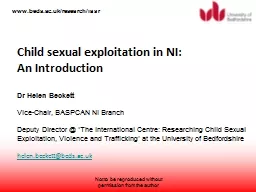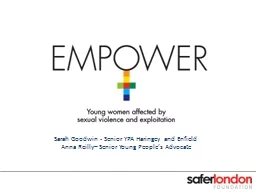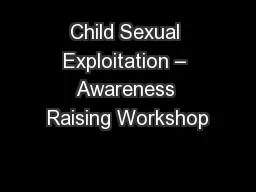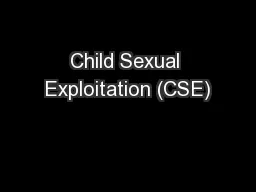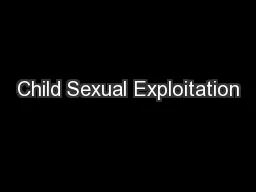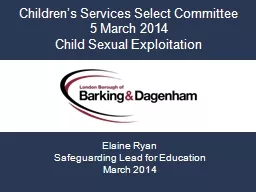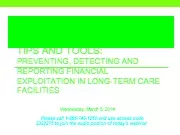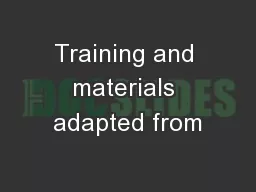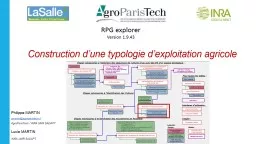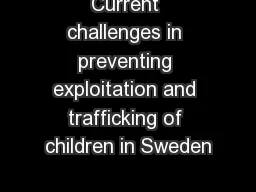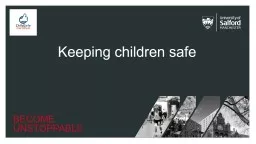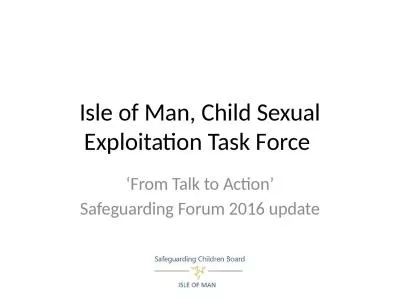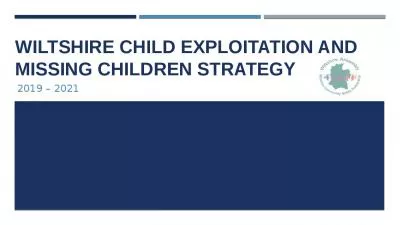PPT-Child sexual exploitation in NI:
Author : liane-varnes | Published Date : 2016-06-19
An Introduction Dr Helen Beckett ViceChair BASPCAN NI Branch Deputy Director The International Centre Researching Child Sexual Exploitation Violence and Trafficking
Presentation Embed Code
Download Presentation
Download Presentation The PPT/PDF document "Child sexual exploitation in NI:" is the property of its rightful owner. Permission is granted to download and print the materials on this website for personal, non-commercial use only, and to display it on your personal computer provided you do not modify the materials and that you retain all copyright notices contained in the materials. By downloading content from our website, you accept the terms of this agreement.
Child sexual exploitation in NI:: Transcript
Download Rules Of Document
"Child sexual exploitation in NI:"The content belongs to its owner. You may download and print it for personal use, without modification, and keep all copyright notices. By downloading, you agree to these terms.
Related Documents

